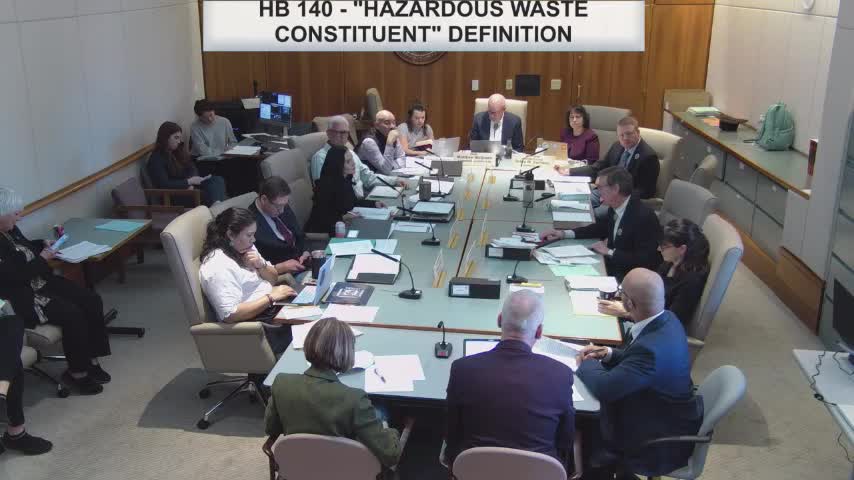Secretary Kenny addresses PFAS regulation challenges in hazardous waste management discussion
February 08, 2025 | Energy, Environment & Natural Resources, House of Representatives, Committees, Legislative, New Mexico
This article was created by AI summarizing key points discussed. AI makes mistakes, so for full details and context, please refer to the video of the full meeting. Please report any errors so we can fix them. Report an error »

During a recent meeting of the New Mexico Legislature's House Energy, Environment and Natural Resources Committee, significant discussions centered around the regulation of PFAS chemicals, commonly known as "forever chemicals," and their impact on public health and the environment.
Secretary Kenny addressed concerns raised by committee members regarding the scope of proposed legislation aimed at managing these chemicals. The Secretary acknowledged the complexity of the issue, noting that while it is possible to draft a bill that targets specific sites and chemicals, such an approach could inadvertently hinder efforts to protect communities from the broader array of PFAS substances. With approximately 19,000 PFAS chemicals currently in production, the Secretary emphasized the need for flexible regulations that can adapt to the rapid introduction of new substances.
Committee members expressed their apprehensions about the potential unintended consequences of narrowly focused legislation. One representative highlighted the confusion surrounding the classification of products and waste, particularly in relation to PFAS contamination in water systems. The Secretary clarified that the determination of what constitutes waste is typically made by the owner or operator of a facility, rather than by government officials, which adds another layer of complexity to the regulatory landscape.
The discussions underscored the urgency of addressing PFAS contamination, particularly in light of recent findings of high concentrations of these chemicals in local ecosystems. The Secretary pointed out that legislative measures must be carefully crafted to avoid creating disparities in protections for different communities, which could lead to some areas being more vulnerable to PFAS exposure than others.
As the committee continues to deliberate on this critical issue, the focus remains on developing effective regulations that safeguard public health while remaining adaptable to the evolving landscape of chemical production and environmental impact. The next steps will involve further discussions on rule-making processes to ensure comprehensive management of PFAS and related substances in New Mexico.
Secretary Kenny addressed concerns raised by committee members regarding the scope of proposed legislation aimed at managing these chemicals. The Secretary acknowledged the complexity of the issue, noting that while it is possible to draft a bill that targets specific sites and chemicals, such an approach could inadvertently hinder efforts to protect communities from the broader array of PFAS substances. With approximately 19,000 PFAS chemicals currently in production, the Secretary emphasized the need for flexible regulations that can adapt to the rapid introduction of new substances.
Committee members expressed their apprehensions about the potential unintended consequences of narrowly focused legislation. One representative highlighted the confusion surrounding the classification of products and waste, particularly in relation to PFAS contamination in water systems. The Secretary clarified that the determination of what constitutes waste is typically made by the owner or operator of a facility, rather than by government officials, which adds another layer of complexity to the regulatory landscape.
The discussions underscored the urgency of addressing PFAS contamination, particularly in light of recent findings of high concentrations of these chemicals in local ecosystems. The Secretary pointed out that legislative measures must be carefully crafted to avoid creating disparities in protections for different communities, which could lead to some areas being more vulnerable to PFAS exposure than others.
As the committee continues to deliberate on this critical issue, the focus remains on developing effective regulations that safeguard public health while remaining adaptable to the evolving landscape of chemical production and environmental impact. The next steps will involve further discussions on rule-making processes to ensure comprehensive management of PFAS and related substances in New Mexico.
View full meeting
This article is based on a recent meeting—watch the full video and explore the complete transcript for deeper insights into the discussion.
View full meeting
